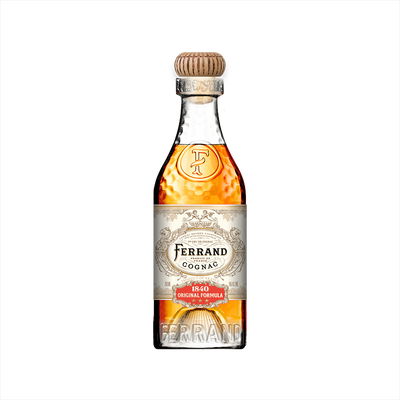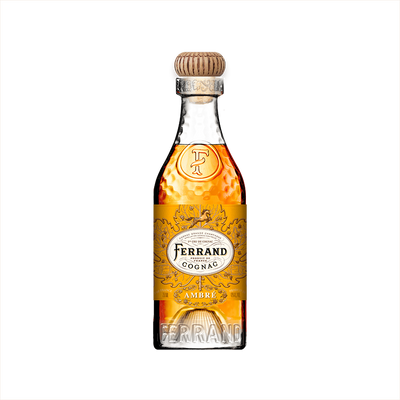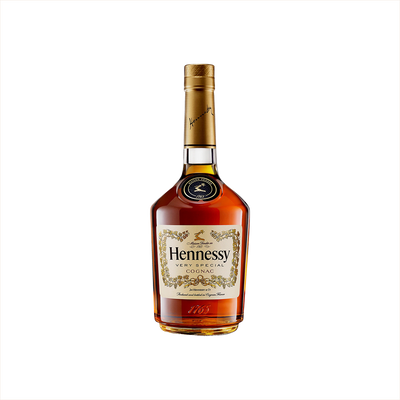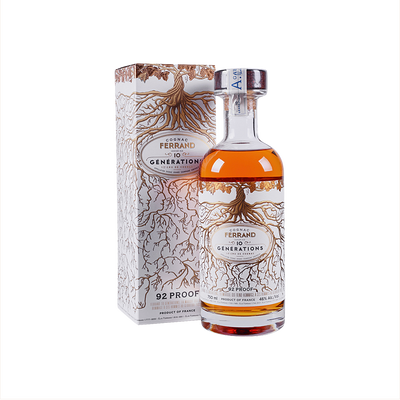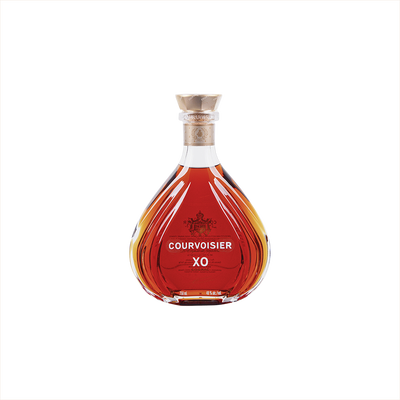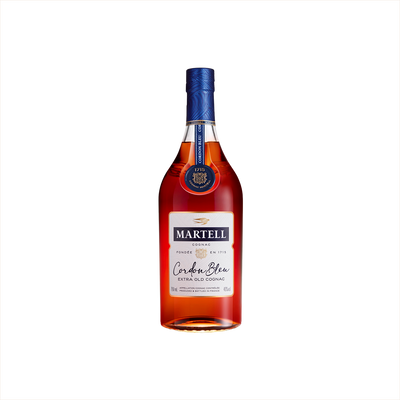Cognac
What is Cognac?
Cognac is a specific type of Brandy & Cognac that must be produced in the Cognac region of southwestern France using strict regulations that have been in place for centuries. This prestigious spirit is made exclusively from white grapes, primarily Ugni Blanc, and must be double-distilled in copper pot stills before aging in French oak barrels for a minimum of two years. What truly defines Cognac is its protected designation of origin status, meaning only brandies produced in this specific French region using traditional methods can legally carry the Cognac name.
Learn More About Cognac
What makes Cognac unique?
Cognac stands apart from other brandies through its strict geographical designation—it can only be produced in the Cognac region of France using specific grape varieties, primarily Ugni Blanc. The double distillation process in traditional copper pot stills, combined with mandatory aging in Limousin or Tronçais oak barrels, creates the spirit's distinctive smoothness and complex flavor profile. While other brandies might use different fruits, grapes, or production methods, Cognac's rigid AOC regulations ensure a consistent quality and character that has made it the gold standard of grape brandies worldwide.
How is Cognac made?
Cognac starts with white wine grapes grown in specific regions around the town of Cognac, France, which are fermented into a tart, low-alcohol wine that's then distilled twice in traditional copper pot stills called alambics charentais. The clear spirit that emerges from distillation must age in French oak barrels for a minimum of two years, though most premium cognacs spend decades maturing, developing their signature amber color and complex flavors of dried fruit, vanilla, and spice. The final blend typically combines eaux-de-vie (the distilled spirits) of different ages and vineyard areas, with a master blender deciding the perfect marriage of flavors.
How do you drink Cognac?
Cognac shines brightest when sipped neat at room temperature from a snifter or tulip glass, allowing you to appreciate its complex aromatics and smooth finish developed through years of aging. While purists prefer it straight, Cognac also makes stellar cocktails—think classic Sidecars, French 75s, or sophisticated variations on Old Fashioneds where its grape-based richness adds layers that whiskey simply can't match. This luxurious spirit feels most at home during cooler months and special occasions, whether you're wrapping up a memorable dinner party or settling into a leather chair by the fireplace on a chilly evening.
How do I choose a good Cognac?
Start by considering your budget and occasion - VS works beautifully in cocktails where other ingredients will complement the spirit, while VSOP and XO shine when sipped neat or with just a splash of water. If you're mixing cocktails, focus on Cognacs with bold, fruity characteristics that won't get lost behind citrus and sweeteners, but if you're planning to savor it straight, look for bottles with complex aging statements that offer layers of vanilla, spice, and dried fruit. Your local liquor store staff can often point you toward excellent producers like Hennessy, Rémy Martin, or smaller houses that offer exceptional value without the premium markup of luxury marketing.
Nutritional Information
Typical Calorie Range per Ounce: 69-75 calories
Typical Carbohydrate Range per Ounce: 0-0.1 grams
Typical Sugar Range per Ounce: 0-0.1 grams
Typically Gluten Free: Yes
While Cognac is distilled from grapes and should naturally be gluten-free, some producers may use additives or flavorings during production. We recommend checking the specific product label or contacting the manufacturer directly to confirm gluten-free status, especially if you have celiac disease or severe gluten sensitivity.
Scrolled this far? Your reward? Cognac Trivia!
- Napoleon's favorite Cognac house, Hennessy, actually started as a side hustle for an Irish military officer who never intended to become a spirits baron. Richard Hennessy founded the company in 1765 after getting wounded in battle and deciding the French countryside looked like a nice place to retire. His family still owns the company today, making it one of the oldest family-run businesses in the world.
- The famous Cognac aging classifications (VS, VSOP, XO) were invented by British customers who couldn't be bothered to learn French. British importers in the 1800s demanded simple English abbreviations, so "Very Superior Old Pale" and "Extra Old" became the standard. The French producers grudgingly adopted these terms, and now the entire world uses British abbreviations to describe France's most prestigious spirit.
- Cognac houses employ professional "noses" who can identify the age, vineyard, and even the specific oak barrel used for any Cognac just by smelling it. These master blenders undergo decades of training and can distinguish between thousands of different aromas. Some have their noses insured for millions of dollars, and they avoid spicy foods, perfumes, and even certain soaps to preserve their supernatural sense of smell.
- The angel's share in Cognac aging is so significant that the region literally has its own microclimate created by evaporating alcohol. About 3% of each barrel evaporates annually, creating alcohol-rich air that feeds a specific black fungus called Baudoinia compniacensis. This fungus only grows in Cognac-producing regions and turns building walls black, serving as a dead giveaway for where the good stuff is aging.
- Hip-hop culture accidentally saved the premium Cognac industry in the 1990s. Sales were declining until artists like Busta Rhymes and Jay-Z started name-dropping expensive Cognac brands in their lyrics. Hennessy Paradis, which cost around $300 a bottle, became a status symbol in urban communities. This cultural shift was so powerful that Cognac exports to the United States increased by over 1000% between 1990 and 2010, with hip-hop artists essentially becoming unpaid brand ambassadors for centuries-old French houses.
Higher-proof spirits can be intense. Mix carefully, taste thoughtfully, and enjoy responsibly.
Gift message (optional)

